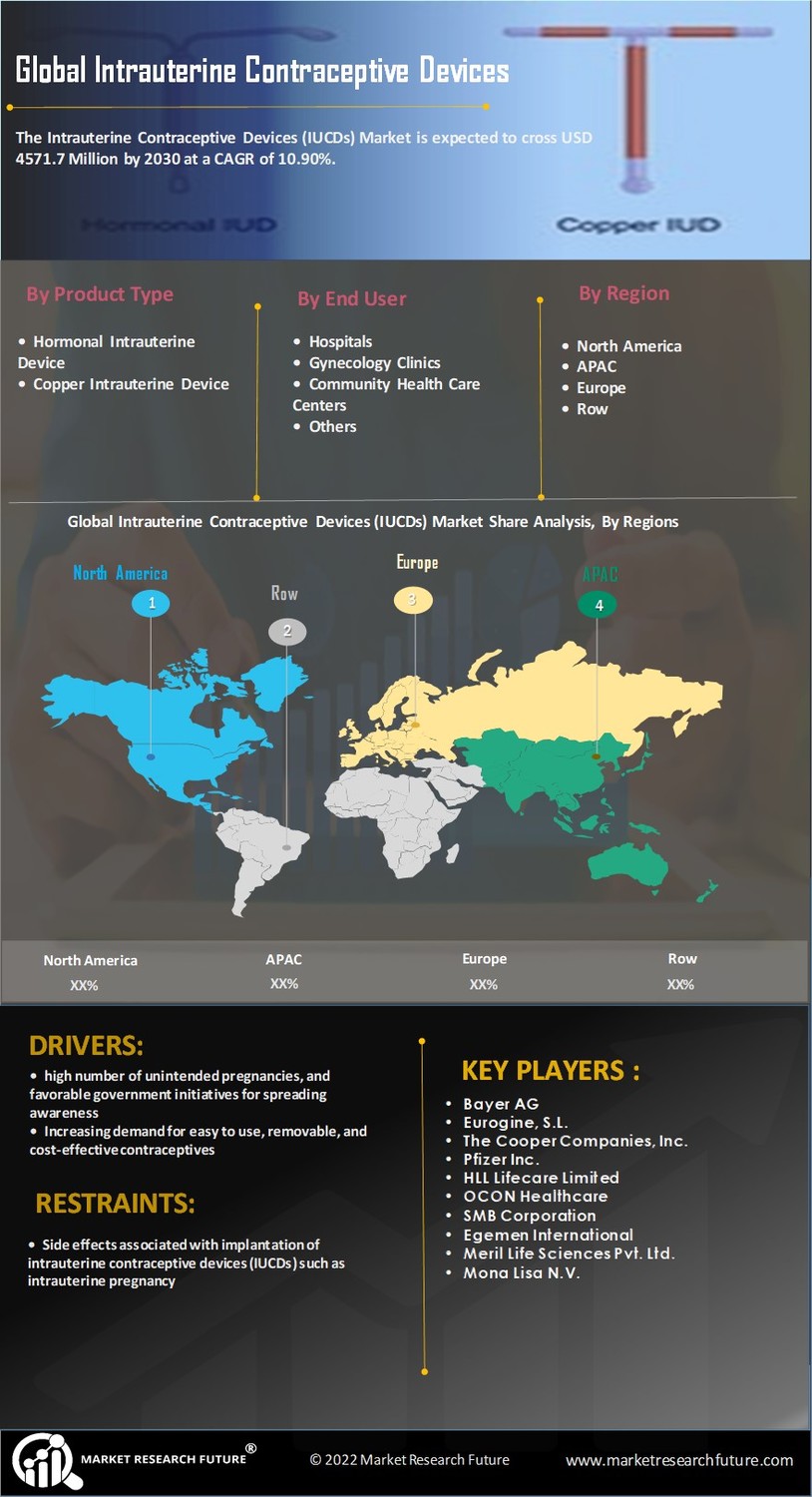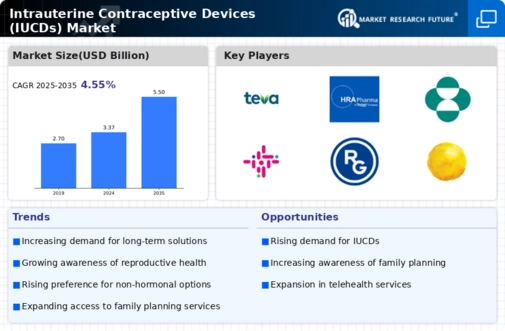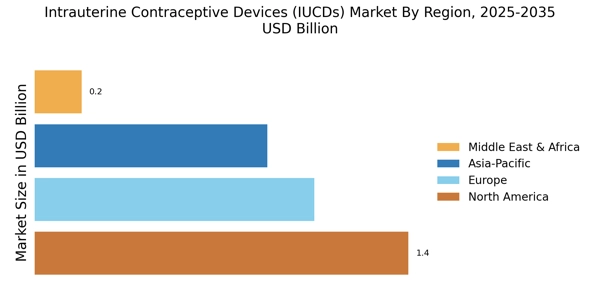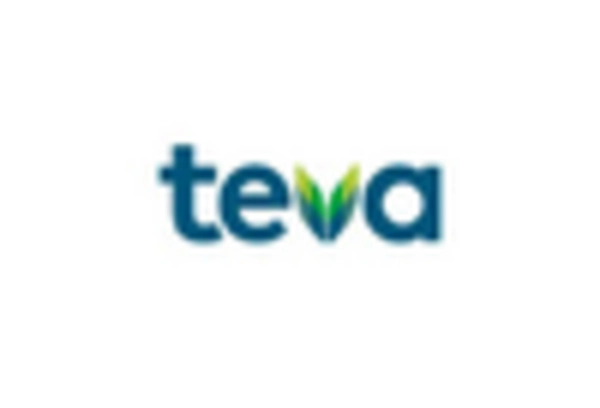Growing Focus on Women’s Health
The Intrauterine Contraceptive Devices Market (IUCDs) Market is witnessing a heightened focus on women's health, which is driving the adoption of IUCDs. As awareness of women's health issues increases, more women are seeking reliable contraceptive options that align with their health needs. IUCDs are often favored due to their non-hormonal nature and long-term effectiveness, appealing to women who prefer to avoid hormonal contraceptives. Furthermore, educational campaigns aimed at informing women about their reproductive health rights and options are gaining traction. This shift in focus not only empowers women but also encourages healthcare providers to offer IUCDs as a viable option. The result is a growing market that reflects the changing dynamics of women's health and reproductive choices.
Government Initiatives and Funding
Government initiatives aimed at improving reproductive health services are playing a crucial role in the Intrauterine Contraceptive Devices Market (IUCDs) Market. Many countries are implementing policies that promote access to contraceptive methods, including IUCDs, as part of broader public health strategies. For instance, funding programs that subsidize the cost of IUCDs are becoming more prevalent, making these devices more accessible to a wider population. This financial support is particularly significant in low- and middle-income countries, where the need for effective family planning solutions is critical. As governments continue to prioritize reproductive health, the market for IUCDs is expected to benefit from increased availability and affordability, thereby enhancing overall adoption rates.
Technological Innovations in IUCD Design
Technological innovations in the design and functionality of Intrauterine Contraceptive Devices Market (IUCDs) are significantly influencing the market. Recent advancements have led to the development of IUCDs that are easier to insert and remove, enhancing user experience and satisfaction. Additionally, new materials and designs are being introduced that may reduce side effects and improve overall efficacy. For example, some IUCDs now incorporate drug-releasing mechanisms that can provide additional benefits, such as pain relief during menstruation. These innovations not only attract new users but also encourage existing users to continue using IUCDs. As technology continues to evolve, the IUCD market is likely to see further growth driven by these enhancements.
Rising Demand for Long-Acting Reversible Contraceptives
The Intrauterine Contraceptive Devices Market (IUCDs) Market is experiencing a notable increase in demand for long-acting reversible contraceptives. This trend is largely driven by the growing recognition of the benefits associated with IUCDs, such as their effectiveness and convenience. According to recent data, IUCDs have a failure rate of less than 1%, making them one of the most reliable contraceptive methods available. As more individuals seek effective family planning solutions, the market for IUCDs is likely to expand. Additionally, the increasing number of healthcare providers recommending IUCDs as a first-line contraceptive option further propels this demand. The rising awareness of reproductive health and the desire for autonomy in family planning choices are also contributing factors to this trend.
Increased Collaboration Between Healthcare Providers and Manufacturers
The Intrauterine Contraceptive Devices Market (IUCDs) Market is benefiting from increased collaboration between healthcare providers and manufacturers. This partnership is fostering a better understanding of patient needs and preferences, leading to the development of more tailored IUCD solutions. Healthcare providers are increasingly involved in the design and distribution processes, ensuring that the products meet the specific requirements of their patients. This collaboration also facilitates educational initiatives that inform both providers and patients about the advantages of IUCDs. As a result, the market is likely to see a rise in the adoption of IUCDs, driven by improved product offerings and enhanced patient education.


















Leave a Comment